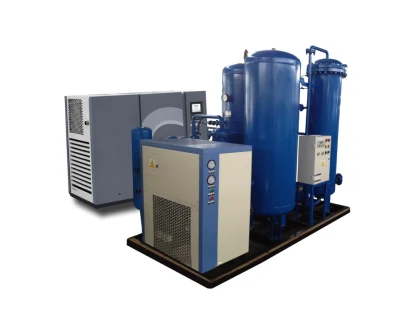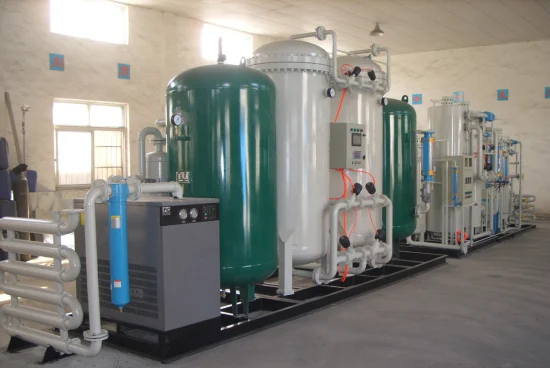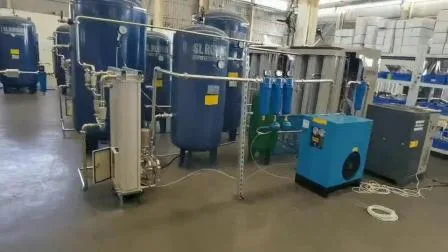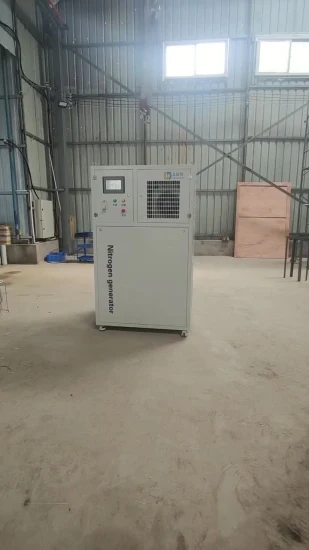
Lo3-40 오존 발생기 살균기 40g 식품 질소 발생기
설명
기본정보
| 상태 | 노이 |
| 인증 | RoHS 규제, UR, ISO, CE, CCC |
| 전압 | 380V |
| 보장하다 | 일년 |
| 일반 | 스키드에 장착/컨테이너링됨 |
| 청정 | 99-99,999% |
| 핵심 구성요소 | PLC, 압력 용기, 솔레노이드 밸브, 분자 |
| 고객 서비스 | 엔지니어는 해외에서 기계를 서비스할 수 있습니다. |
| 질소 이슬점 | -40°C |
| 수명 | 십 년 |
| 운송 패키지 | 수출 표준 나무 상자/팔레트 |
| 사양 | 1000*1200*1500 |
| 등록 상표 | LDH |
| 기원 | 베이징, 중국 |
| HS 코드 | 841960 |
| 생산 능력 | 500 |
상품 설명
40m3/h 식품 포장, 특수 질소 기계, 순도 99.99% LDH GAS Systems는 질소 생산, 산소 생산, 정화 시스템 등을 위한 현장 가스 플랜트를 전문으로 하는 중국 제조업체입니다. 스키드 장착 시 고순도 질소를 위한 컴팩트 시스템. 2017년 이후 전 세계적으로 100개 이상의 시스템이 구축되었으며, 시스템은 신뢰성, 비용 효율성, 편의성 및 우수한 서비스로 모든 사람의 존경을 받고 있습니다. LDH 시스템 제품군은 화학 및 정제, 석유 및 가스 생산, 전자, 항공 및 우주항공, 제약/의료, 식품, 야금, 유리, 석탄 채굴 및 양식업 등 다양한 산업 분야에서 사용됩니다. LDH 시스템은 최첨단 기술과 완벽한 제조 기술의 종합체입니다. 우리의 목표는 고객에게 보다 안정적이고 경제적이며 편리한 LDH 공기 분리 시스템과 보다 전문적인 서비스를 제공하는 것입니다. PSA 질소 발생기 전체 이름: 압력 변동 흡착(PSA). PSA는 1960년대부터 1970년대 초반부터 해외에서 급속히 발전한 새로운 가스 분리 기술이다. 그 원리는 다양한 가스 분자의 다양한 "흡착 성능"을 기반으로 분자체를 사용하여 가스 혼합물을 분리하는 것입니다. 공기가 원료로 사용됩니다. 고효율과 다양한 고체흡착제를 사용하여 질소와 산소를 선택적으로 흡착하여 공기 중의 질소와 산소를 분리합니다.
현재 탄소 분자체와 제올라이트 분자체는 질소 및 산소 생산에 더 일반적으로 사용됩니다. 분자체에 의한 산소와 질소의 분리는 주로 분자체 표면에서 두 가스의 서로 다른 확산 속도에 기초합니다. 탄소 분자체는 활성탄과 분자체의 일부 특성을 지닌 탄소 기반 흡착제입니다. 탄소 분자체는 0.3 nm ~ 1 nm 범위의 기공 크기를 갖는 매우 작은 미세 기공으로 구성됩니다. 가스(산소)의 직경이 작을수록 분자체의 고체상으로 더 빠르고 더 많이 확산되어 탄소 분자체 내 질소가 농축됩니다. 가스상을 달성할 수 있습니다. 일정 시간이 지나면 산소 흡착이 있는 분자체는 서로 다른 가스 흡착 시 서로 다른 압력 하에서 탄소 분자체에 해당하는 평형을 이룹니다. 흡착 특성: 산소 흡착 시 탄소 분자체를 제거하려면 압력을 줄입니다. 이 과정을 재생이라고합니다. PSA는 일반적으로 두 개의 타워를 병렬로 사용하여 가압 흡착과 감압 재생을 번갈아 사용하여 연속적인 질소 흐름을 얻습니다.
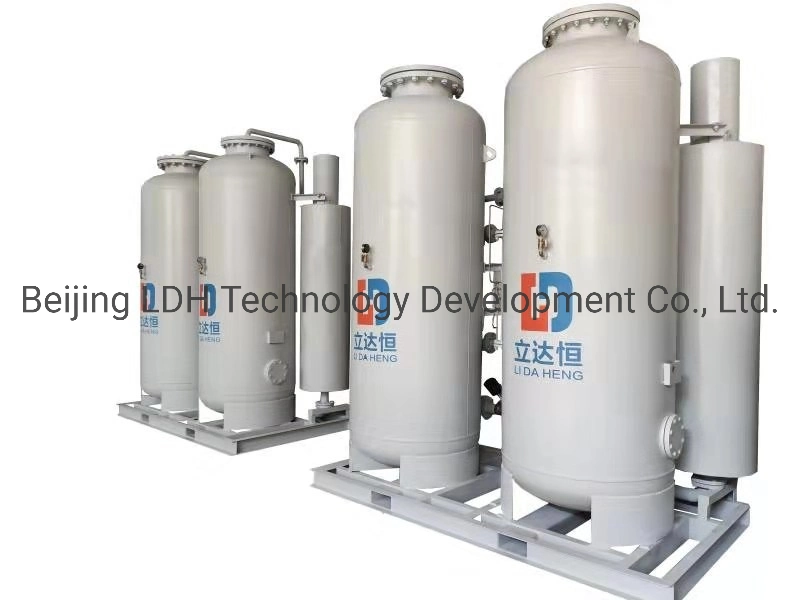
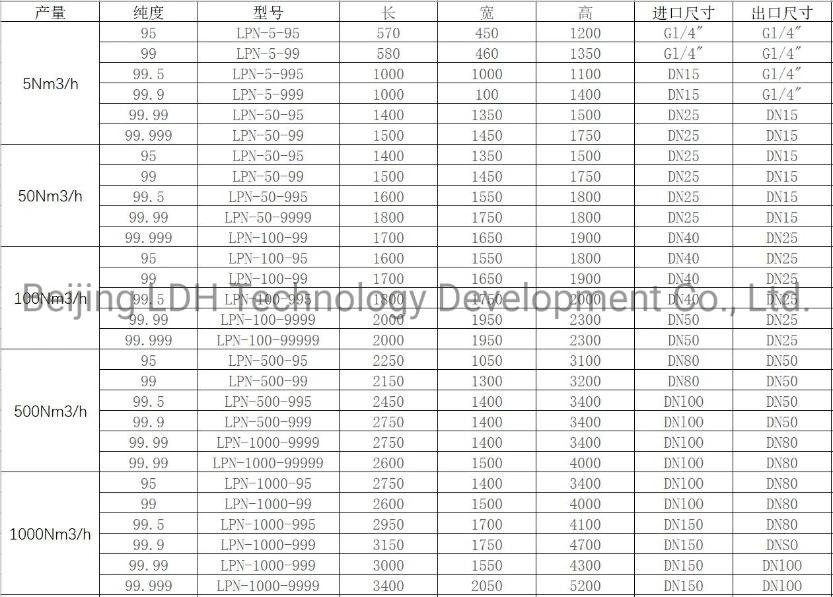
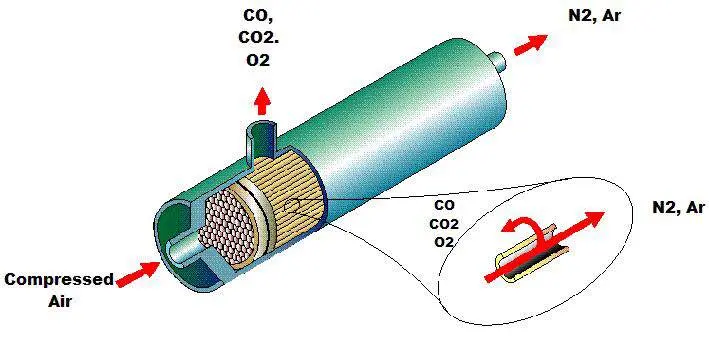
3) Spare Parts ServiceWorldwide, quick and low-priced over the complete lifetime of your plant. The distinct tagging of all plant components delivered by us enables us to identify clearly the spare parts requested by you. We supply you with products designed for a long life and economic efficiency. For modifications and extensions we look for the most optimal and economic solution for your individual purpose. 4) Maintenance/RevisionsRegular inspection and maintenance ensures permanent operation, avoids damage and prevents unexpected breakdowns. In the course of maintenance/revision works we check all relevant components for function and condition, exchange defect, used and worn parts and afterwards optimally eadjust your plant to the given operating conditions. Depending on the plant size and scope of work, our service range comprises also a detailed scheduling of revisions as well as coordination and supervision of contractors. As a matter of course we supply maintenance documentation in form of reports and spare part recommendations, and we coordinate our schedules according to your requirements. 5) TrainingKnow-how for your personnel. Operation, maintenance and repair, electric measuring and control equipment or process engineering - we offer you specific training by our experts. Whether on site working with theplant itself, or on our permises, we concentrate on your questions and problems. What is a Packaging Gas?Air contains approximately 78% nitrogen, 21% oxygen and a variable amount of moisture. When exposed to air, foods such as potato chips absorb moisture and go stale and soggy quickly. Atmospheric oxygen also reacts with the unsaturated fatty acids present in foods, resulting in rancid off-flavours. Consequently, it is always a challenge faced by food manufacturers in preserving the desirable quality and prolonging the shelf life of food products.The use of packaging gas is an effective solution. A packaging gas is a gas that is introduced into a package before, during or after filling with food to protect the food from oxidation or spoilage. Examples include nitrogen, carbon dioxide and nitrous oxide. Nitrogen has a long history of use as a packaging gas in various foods including snacks, breakfast cereals, candies, bakery products, dried fruits and vegetables, and processed meat products.Nitrogen Does More than a Packaging GasNitrogen has found its way to the brewery and coffee industries where nitrogen is infused in beer or cold brew coffee to make 'nitro beer' or 'nitro brew', giving the final product a richer and creamier mouthfeel.How does Nitrogen Work as a Packaging Gas?Unlike the air you breathe every second, nitrogen used in food packaging contains very little oxygen and moisture. Nitrogen is inert (i.e. not reacting with any food components), odourless and tasteless. When nitrogen is introduced into a package, it drives out oxygen and any moisture present. By modifying the atmosphere inside the package, food packaging with nitrogen preserves quality, slows down spoilage and extends the products' shelf life.Nitrogen also cushions and protects delicate foods inside the package from being crushed during handling. Nonetheless, the amount of nitrogen used should provide enough protection but not too much to allow space for additional expansion due to pressure changes in transit and during storage.The package, with low gas permeability, must be sealed tightly to prevent the nitrogen from escaping. Once you open the package, the food inside is exposed to atmospheric air containing oxygen and moisture. Without protection from an immediate, controlled environment, the contents are then prone to moisture pickup, spoilage and oxidation. Therefore, it is best to consume the food products as soon as possible once the package is opened.Food suppliers are always seeking ways to extend shelf life. Improved shelf life allows manufacturers to extend their geographical reach and allows the product to remain in stores and consumer's homes longer. Modified Atmosphere Packaging (MAP) is a technique commonly used in the food processing industry to extend shelf life. The MAP process involves displacing the air inside a package with a protective gas to keep oxygen at controlled levels (less than 2 percent). Too much oxygen and moisture in a package often leads to bacterial growth and oxidation resulting in spoilage, inconsistent flavors, poor product quality, and shortened shelf life. Nitrogen is frequently used as a protective gas because of its dry, inert qualitiesSources of nitrogenNitrogen can be obtained from outside suppliers in the form of high-pressure tanks, dewars, or bulk liquid supply. Nitrogen can also be produced on-site using standard compressed air with an in-house nitrogen generator. An in-house generator separates nitrogen and oxygen from the air, and can often be the most efficient and economical method of supplying nitrogen for MAP applications.Disadvantages of a delivered nitrogen supplyRelying on outside vendors can pose several challenges including uncontrollable price increases, contract negotiations, tank rental fees, adherence to OSHA requirements, hazardous material fees, delivery surcharges, and local and state taxes. Problems such as scheduling conflicts, delivery delays, and lengthy procurement processes can slow down operations.This all adds up to extra administrative work and higher operational costs. The delivery approach also doesn't fit the trend toward lean production techniques and developing fewer, more efficient supply chains. Precautions must also be taken when handling and storing high pressure cylinders. A dangerous situation can be created if a cylinder is dropped and a valve is broken off, potentially causing the cylinder to become a projectile.Operational benefits of generating nitrogen on-siteGenerating your own supply of nitrogen in-house eliminates the challenges associated with outside vendors and ensures long-term cost stability. Generating nitrogen in-house is also good for the environment and represents a sustainable approach to supplying the gas. Producing nitrogen off site at fractional distillation plants and transporting it to end users is energy intensive and can result in large amounts of CO2 emissions.
이전: 냉동 공냉식 압축 공기 건조기
당사 연락처


